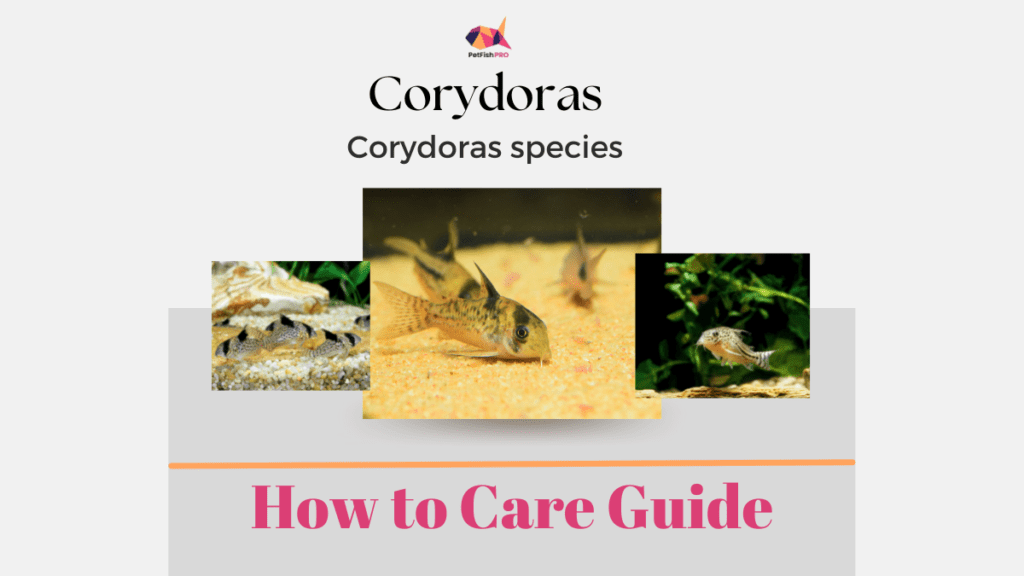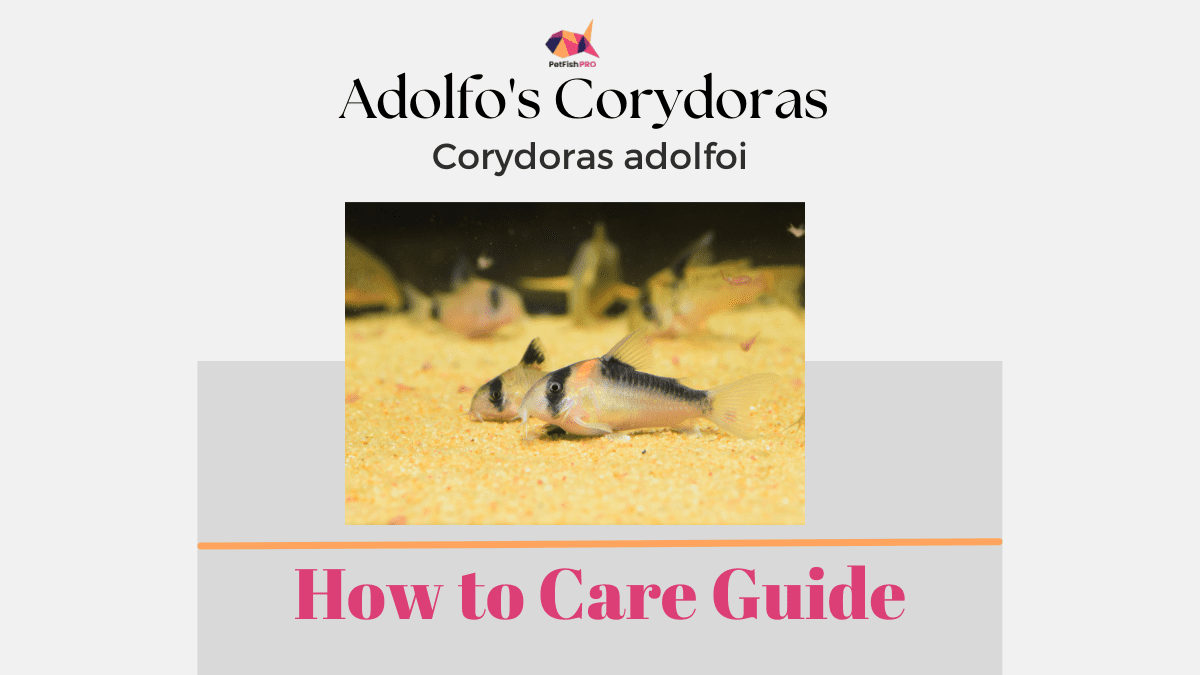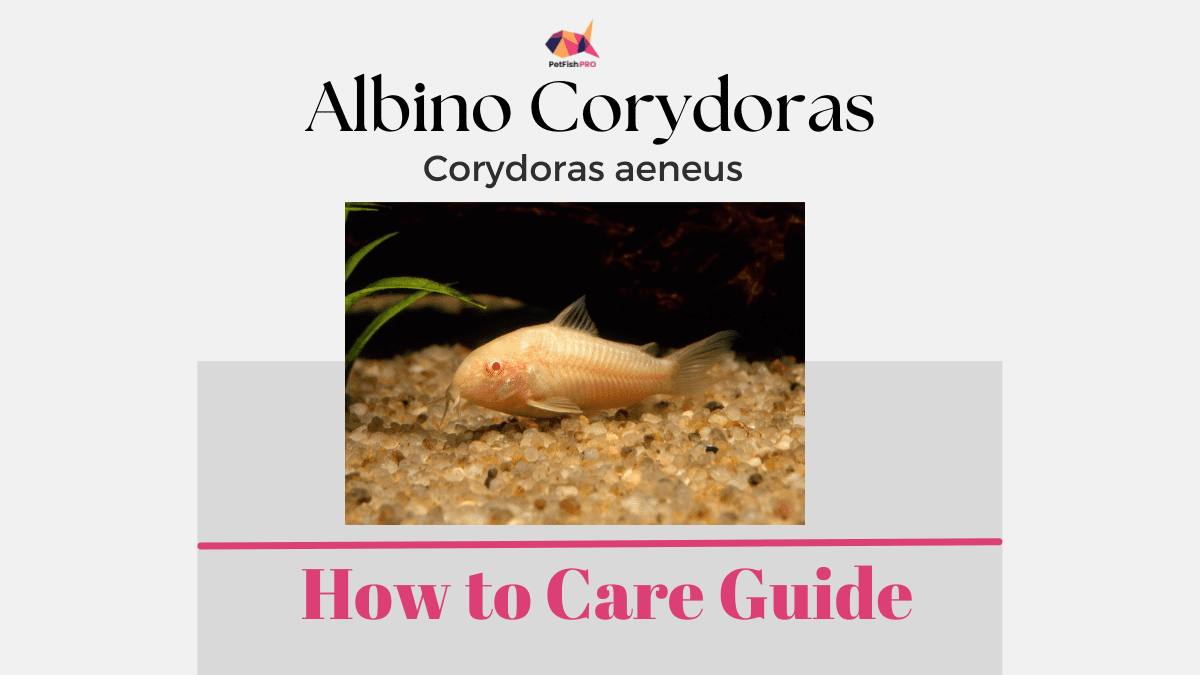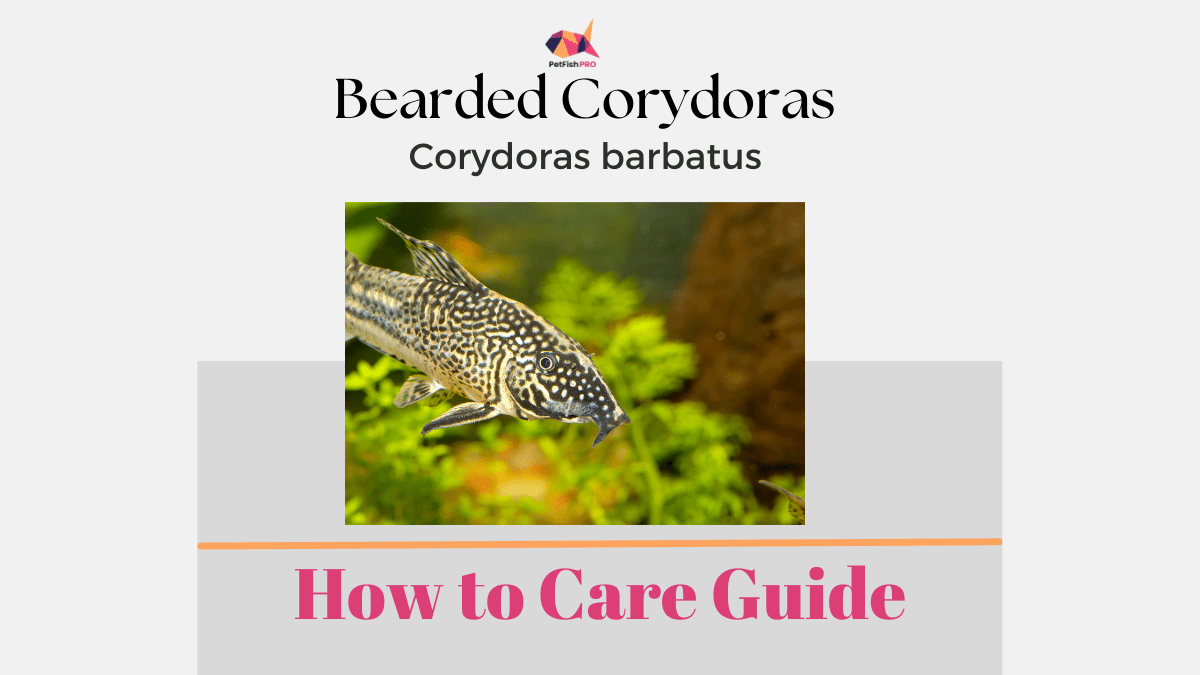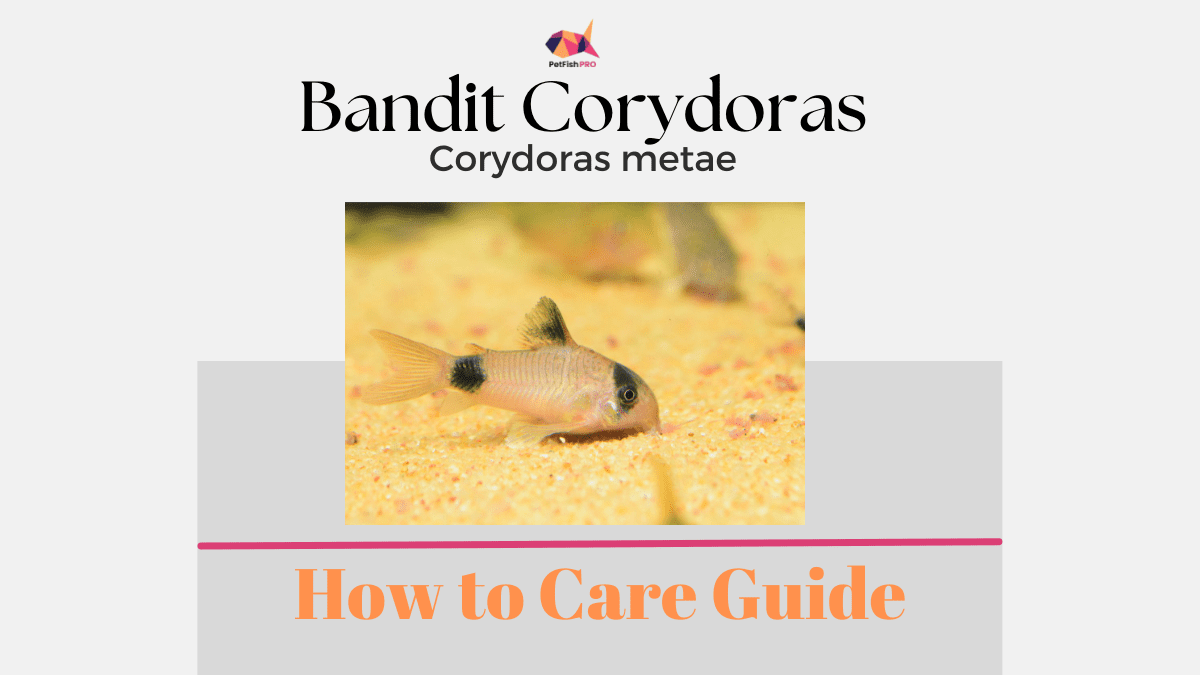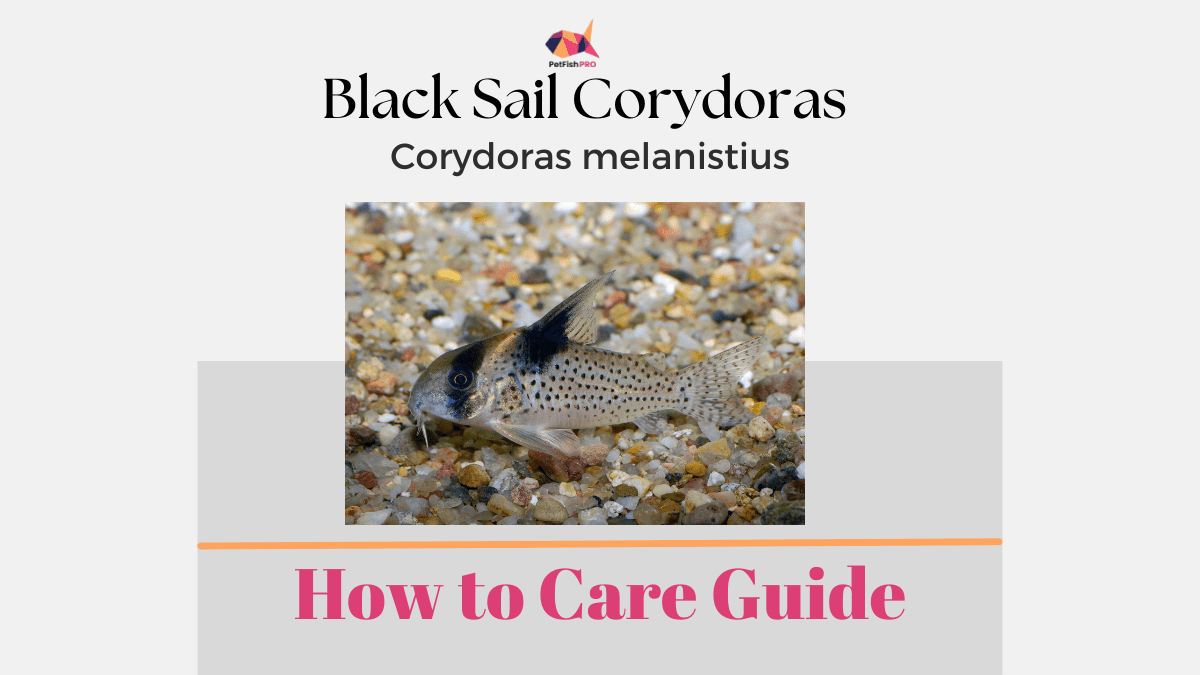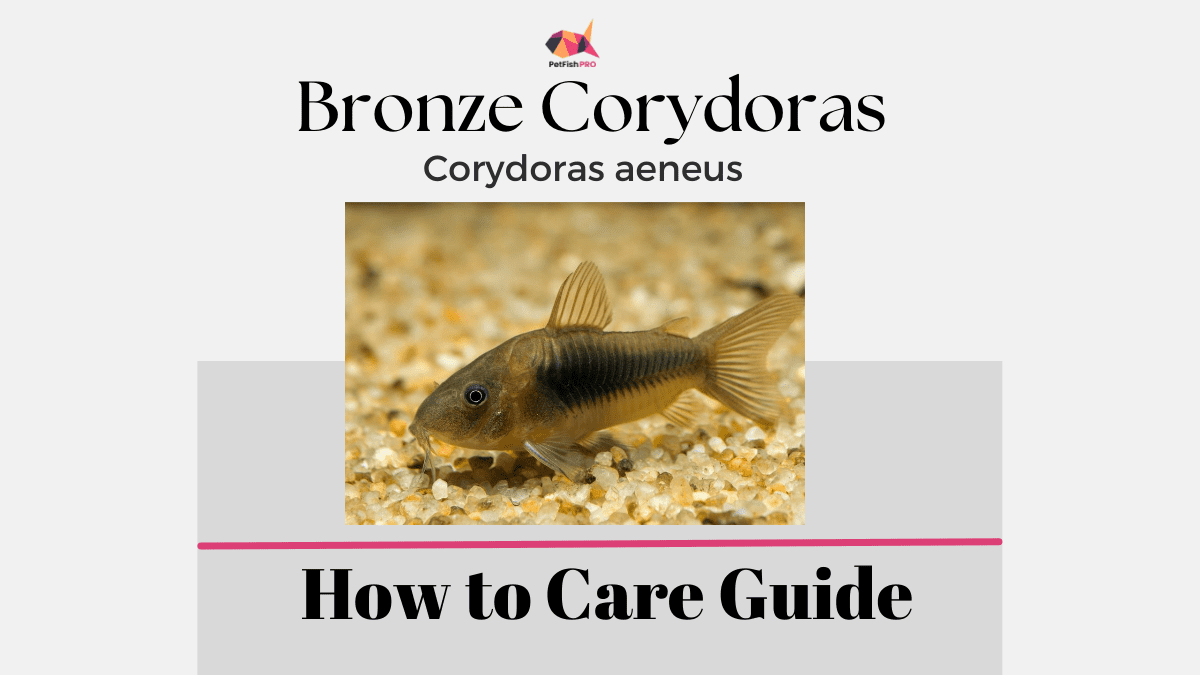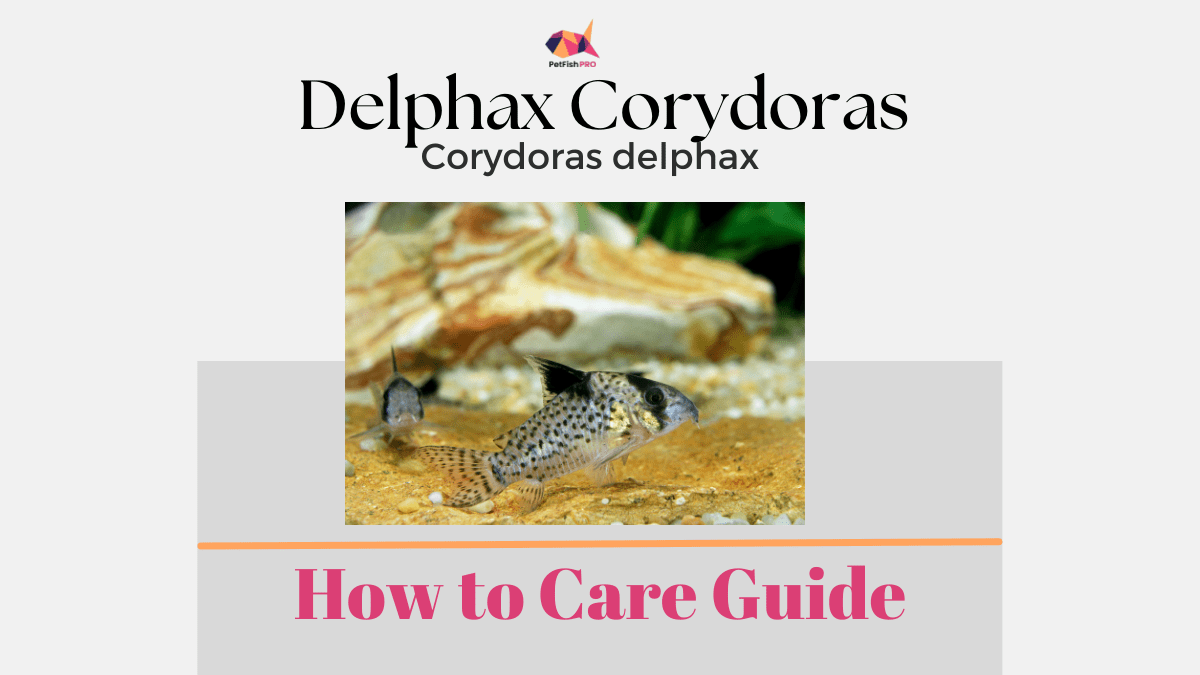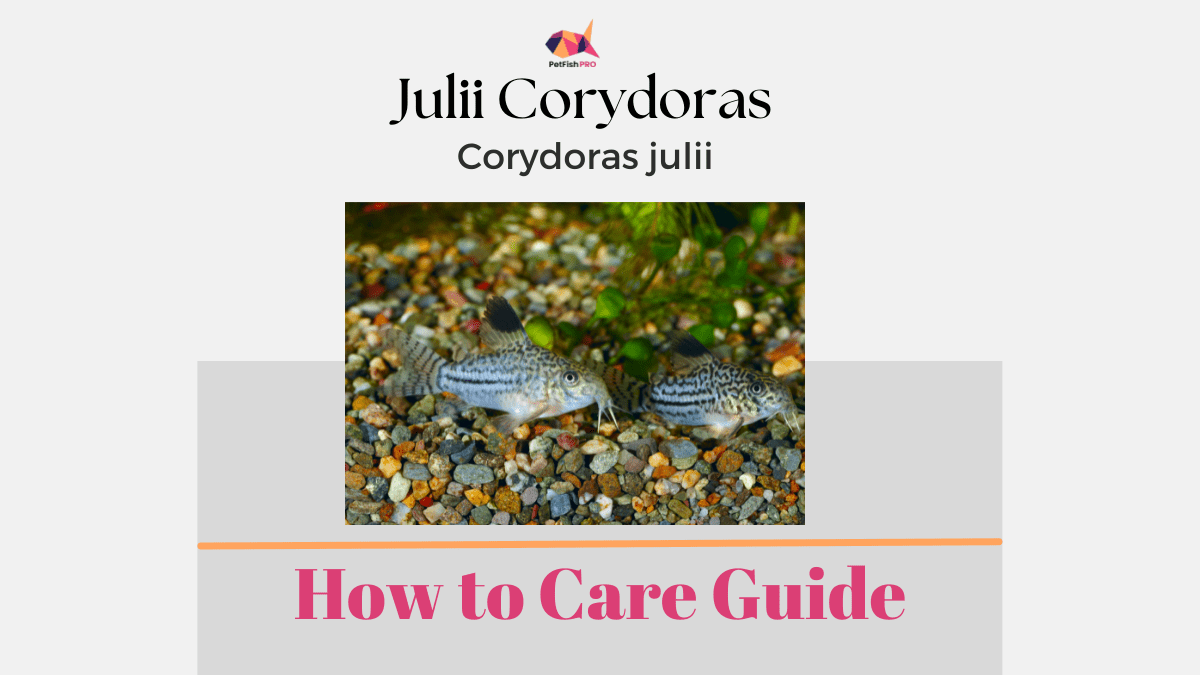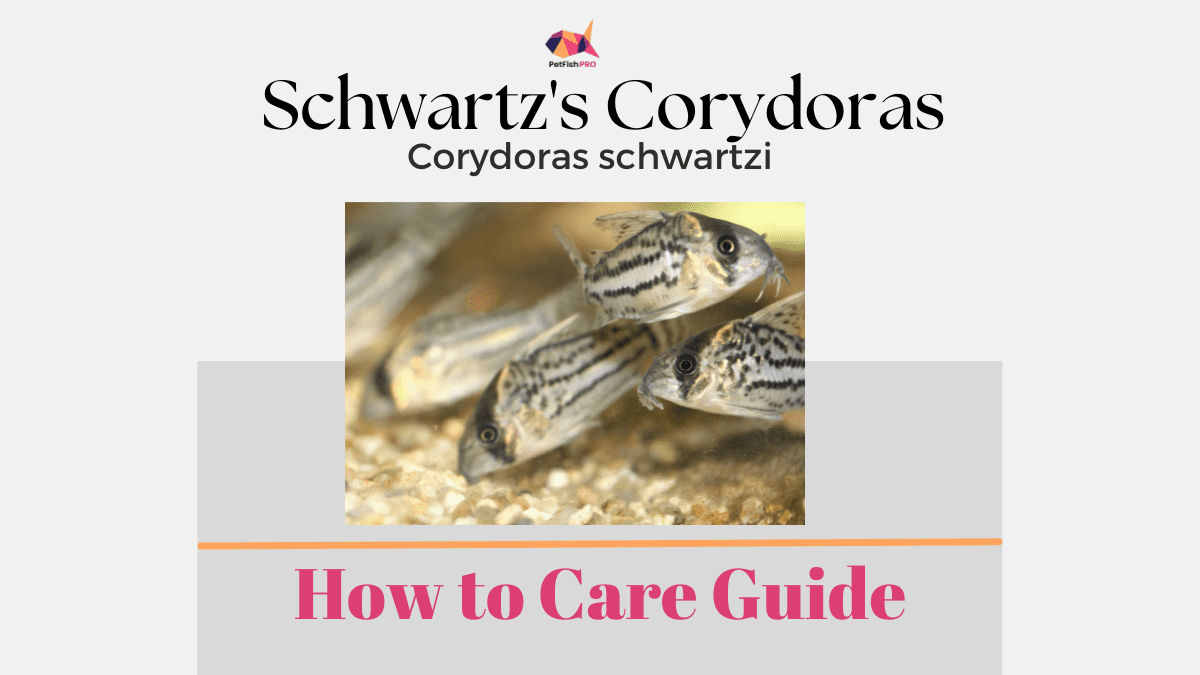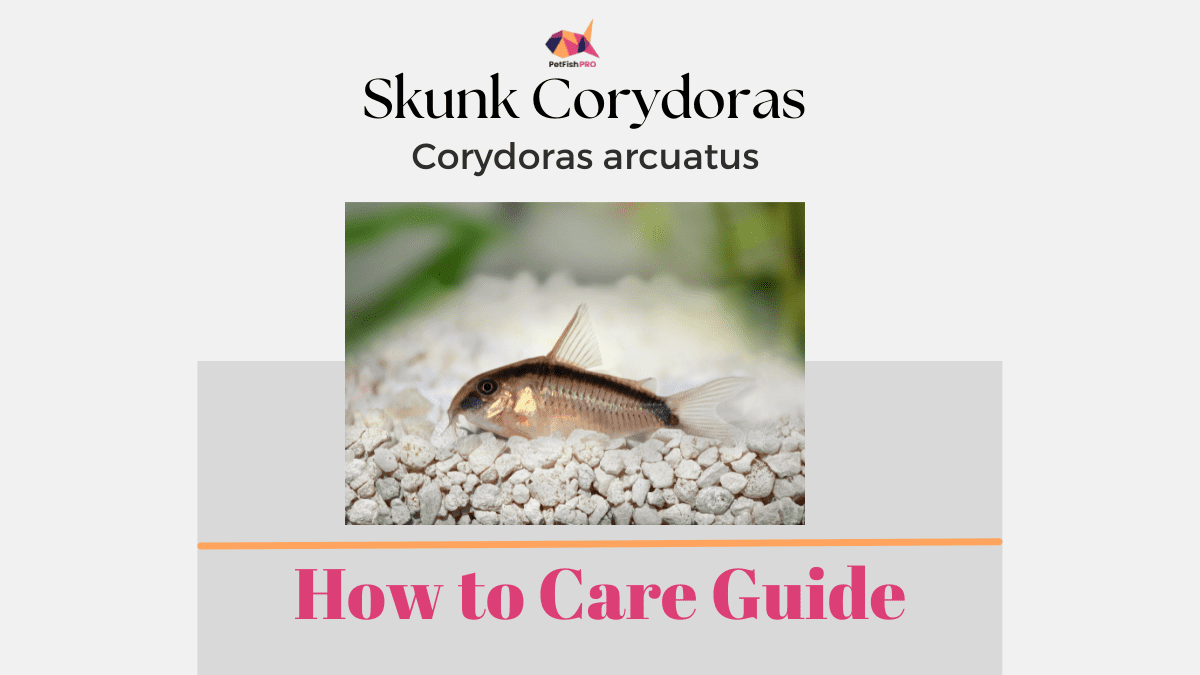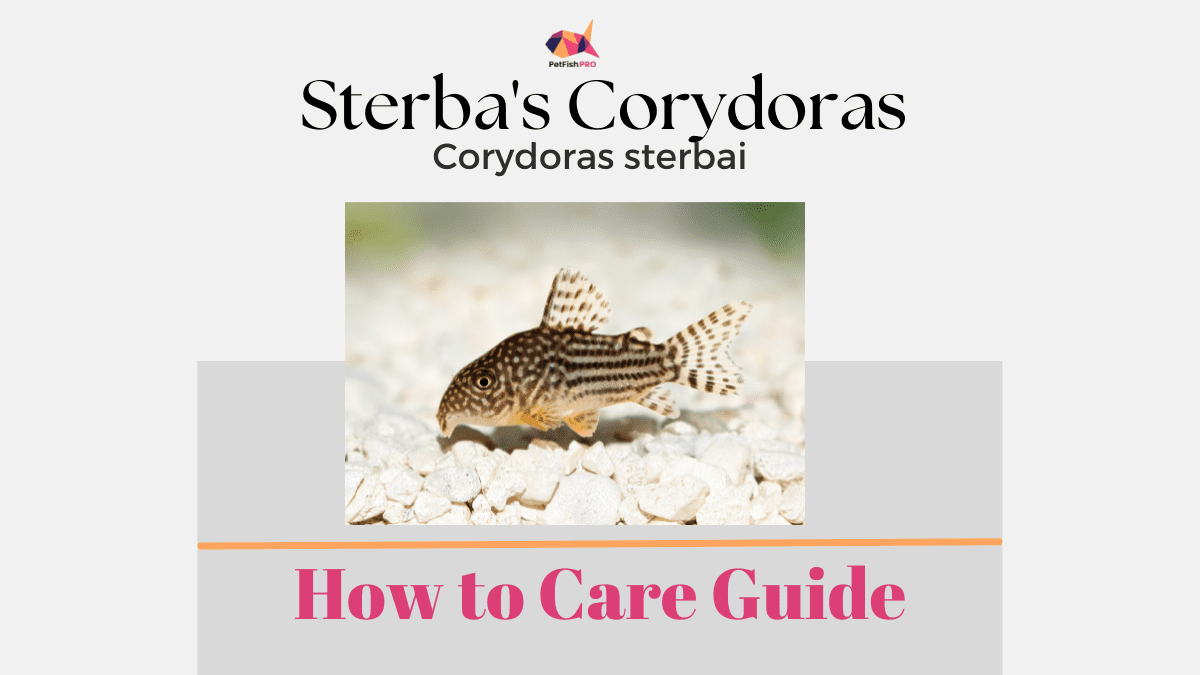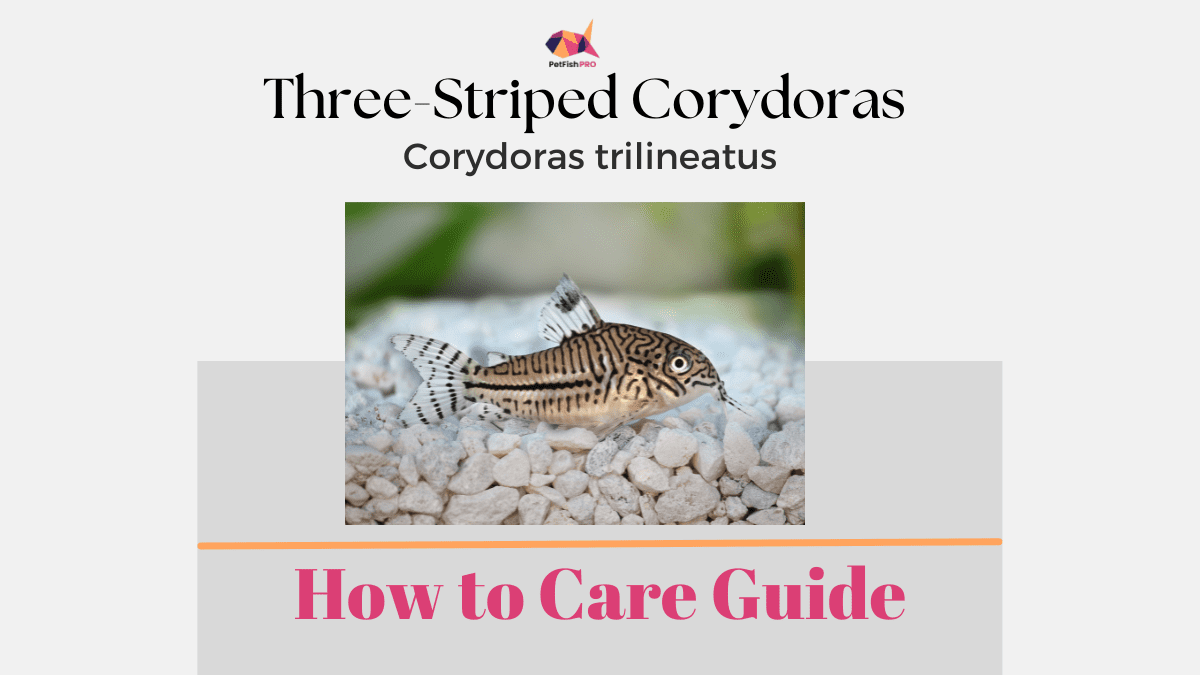Corydoras or Cory Catfish (Corydoras species) are very popular freshewater aquarium fish. Originating from the rivers and streams of South America and Central America, there are over 150 different species of Corydora catfish. Corydoras are bottom dwelling fish that will scavenge and clean your aquarium. They are easy and hardy fish to care for because they can tolerate a wide range of water parameters. Corydoras are also peaceful and social, making them excellent fish for beginners looking to add bottom-dweller fish in their community tank.
Characteristics
| Name | Corydoras Catfish |
| Scientific Name | Corydoras species |
| Family | Callichthyidae |
| Subfamily | Corydoradinae |
| Origin | South America |
| Size | 1-5 inches (2.5 cm to 12.5 cm) |
| Minimum Tank Size | 10 Gallons or 20 Gallons (depending on the size) |
| Temperament | Peaceful |
| Ease of Care | Easy |
| Diet | Omnivores |
| Breeding | Egglayer |
| PH | PH 6.0-7.0 |
| Water Temperature | 68-79F (20-26C) |
| Water Hardness Level | Soft to Hard (50-150mg/l) |
Corydoras Infograph
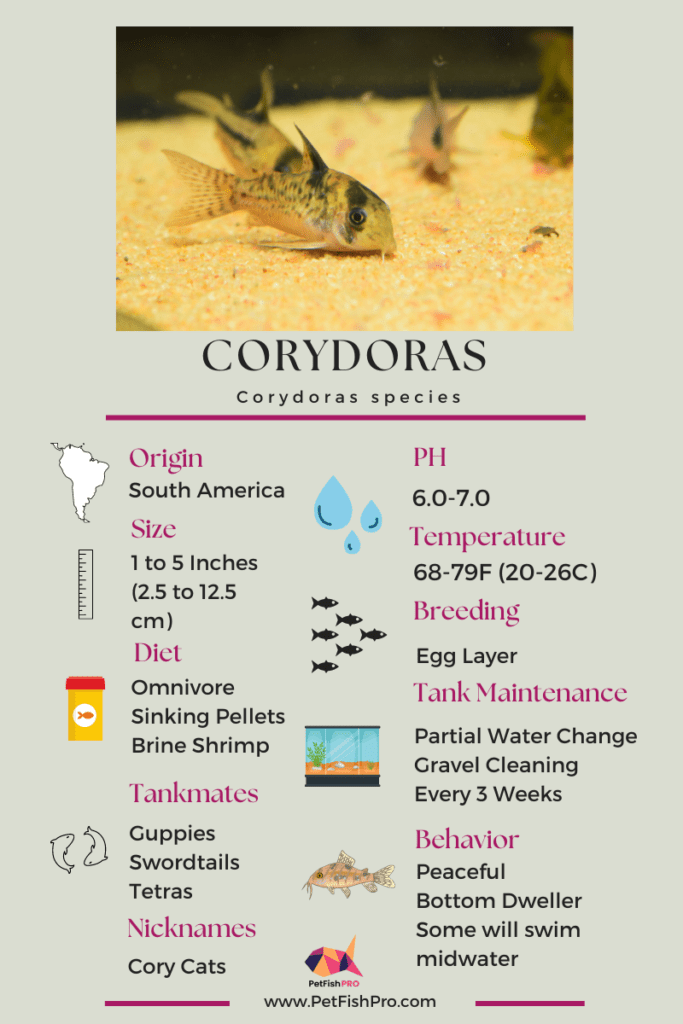
What are Other Names for Corydoras Catfish?
Corydoras Catfish are also called Cory Cats, Cory Catfish or Corydoras.
How Big Do Corydoras Get?
Depending on the species, Corydoras Catfish can grow to 1-5 inches (2.5 cm to 12.5 cm).
What are the Smallest Corydoras?
Pygmy Corydoras are the smallest Corydoras, growing to only 1 inch (2.5 cm).
What are the Largest Corydoras?
Bearded Corydoras are the largest Corydoras, growing to as large as 5 inches (12.5 cm).
What are the Easiest Corydoras to Take Care Of?
The easiest and most widely available Corydoras are the Bronze Corydoras (Corydoras Aeneus). The Albino Corydoras is also another color variation of Corydoras Aeneus. Both the Albino Corydoras and Bronze Corydoras are the easiest Corydoras to take care of. They are tolerant to a wide range of water parameters and are also the easiest Corydoras to breed.
What to Feed Corydoras?
Cory Cats are omnivores. Corydoras are bottom dweller fish that will feed on uneaten food. Even though they are scavengers, you still need to feed Corydoras their own food. It’s not enough to rely on food collected from scavenging as their only food source. You should supplement their diet with sinking pellets that are formulated for bottom-dwelling fish.
How to Set Up an Aquarium for Corydoras?
Corydoras Catfish will thrive in a well planted aquarium with open swim areas. Corydoras spend their day digging and will use their mouth to dig the substrate. Use fine substrate like sand instead of gravel in your aquarium to make it easier for Corydoras to dig and to prevent damaging their whisker-like barbels. Provide plenty of plants and rocks/shells for cover so your Corydoras will feel protected and safe.
What are the Best Water Parameters for Cory Catfish?
Corydoras Catfish are tolerant of a wide range of water parameters but should not be in excessively acidic water conditions.
What is the Ideal Water Temperature for Corydoras Catfish?
Corydoras Catfish should be kept in a tank with a water temperature of 68-79F (20-26C).
How to Set-Up Your Tank for Breeding Corydoras?
Set up a breeding tank with 1 male and 2 female Corydoras. Make sure the breeding tank is well-planted so Corydoras can lay their eggs on the plant leaves (Java Moss). You can also use spawning mops. Set up the breeding tank with fine substrate like sand or keep the tank bare without any substrate. Add one or two pots or big shells, so your Corydoras can hide and feel safe during spawning. For optimal breeding conditions, it’s important to keep your Corydoras well fed with high nutrient, high protein food.
What are the Easiest Corydoras to Breed?
Bronze Corydoras (Corydoras aeneus) and Albino Corydoras (Corydoras aeneus) are the easiest species to breed. If you want to get into breeding Corydoras, start with Bronze Corydoras or Albino Corydoras.
How to Breed Corydoras Catfish?
Corydoras Catfish are egg layers. Corydoras are relatively easy to breed at home.
Breeding occurs with the female Corydoras swallowing male sperm and then releasing the sperm from her gut to her cupped pelvic fins along with some eggs. She will lay these eggs in small batches on plant leaves or on the aquarium surface.
The eggs will hatch 5-6 days later. After hatching, the young Corydoras will stay on the substrate and consume their yolk sac until they become free swimming. Once they are free swimming, feed the young Corydoras with fish food specifically for fry or freshly hatched brine shrimp.
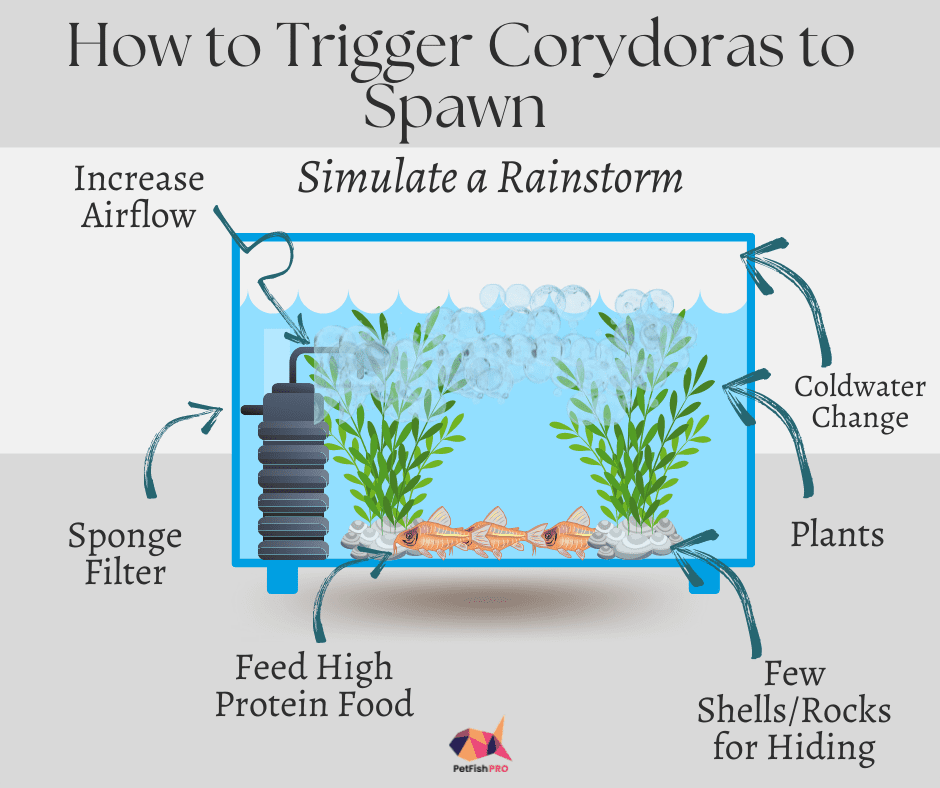
How to Get Corydoras to Start Spawning?
The key to spawning Corydoras is to simulate the after rainstorm environment. Rainstorms tend to trigger Corydoras to start spawning. You can trigger spawning by doing the following three things:
1.) Do a partial cold water change. Add colder water into the tank. This will bring aquarium water temperature down a few degrees which will simulate the water temperature after a heavy rainstorm.
2.) Feed your Corydoras high protein, high nutrient food. Keeping them well-fed will condition your Corydoras for spawning.
3.) Increase airflow in your aquarium. The increased airflow will simulate the strong river currents after a rain storm. This will trigger spawning. Under the right conditions, your Corydoras will start spawning.
Will Adult Corydoras Catfish Eat Their Eggs?
Unfortunately, Corydoras Catfish don’t take care of their eggs and fry. They will eat their own eggs and fry. You will need to separate the adults from the eggs. The best way to do this is to move the eggs to a fry tank. You can also move the eggs to a breeding box.
If the eggs are on plant leaves, remove the entire plant and transfer it to the fry tank. If you are using a breeding box, you can gently remove the eggs one by one with your fingers and transfer them to the breeding box.
If the eggs are on the aquarium glass, gently scrape off the eggs with your finger and transfer them to the fry tank. You can also use a credit card to scrape eggs off the aquarium glass. Corydoras will lay eggs in many different places so you should check the entire aquarium for eggs- behind filters, on plant leaves, aquarium glass, shells, etc.
Make sure the water parameters and water temperature of the fry tank are similar to the breeding tank. Use a sponge filter in the fry tank. Sponge filters are gentler and will not suck up the Corydoras fry.
How to Prevent Fungus on Corydoras Eggs
Fungus growth on Corydoras Eggs are one of the most challenging aspect of breeding Corydoras. There are a few things you can do to prevent fungus on Corydoras Eggs.
1. Methylene Blue
Add a few drops of methylene blue to the fry tank to prevent egg fungus. Methylene blue will help prevent fungus growth on eggs. Once the eggs hatch, remove the methylene blue because it will be harmful to the fry.
2. Remove Fungus Infected Eggs
Remove Fungus Infected Eggs Immediately. If you see fuzzy white growth on Corydoras eggs, that is a sure sign of fungus growth. Immediately remove the fungus infected eggs to prevent fungus from spreading to nearby eggs.
3. Aerate the Water
Make sure there is sufficient aeration in the water. If you are keeping your Corydoras Eggs in a jar, you have to aerate the jar. You can aerate the water by adding an airstone in the jar. Aerating the water will prevent fungus on Corydoras eggs.
Infograph on How to Prevent Fungus Growth on the Eggs of Corydoras
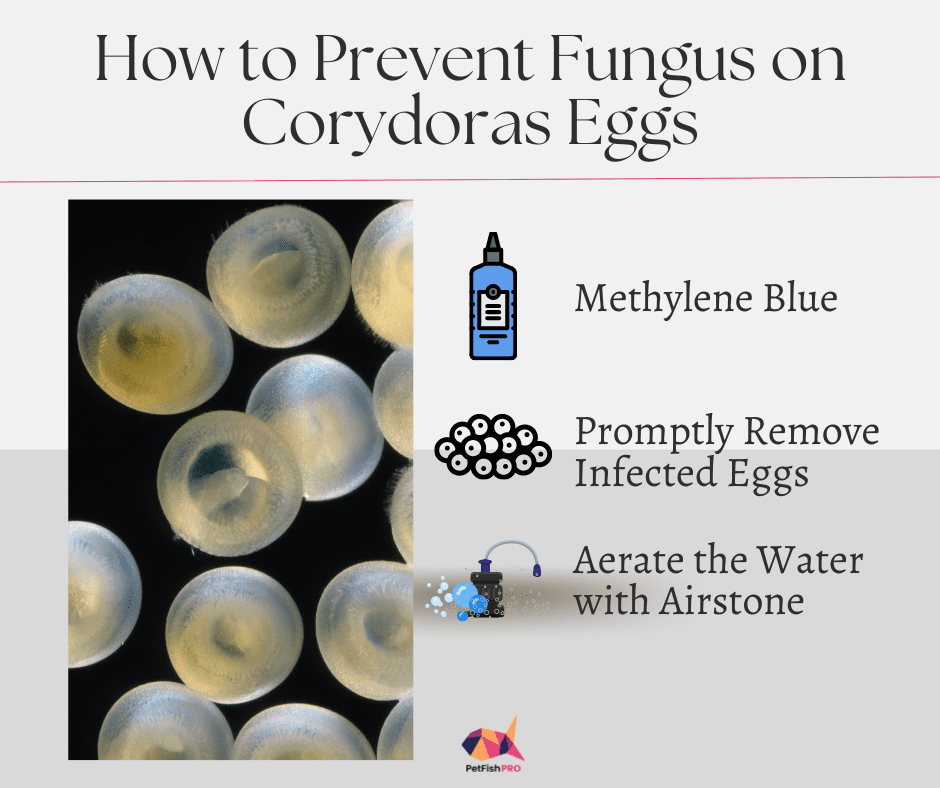
Are Cory Catfish Peaceful or Aggressive Fish?
Corydoras Catfish are peaceful fish. Making them good tankmates in community tanks.
How Many Corydoras Catfish in a Tank?
Corydoras Catfish are not solitary fish. They are social fish that should be kept in groups of the same species. If space permits and without overstocking your tank, keep at least 5 Corydoras in your tank.
Use our How Many Fish in a 10 Gallon Tank Calculator to find out how many Corydoras Catfish you can keep in a 10 gallon tank. For 20 gallon tanks, use our How Many Fish in a 20 Gallon Tank Calculator to find out how many Corydoras Catfish you can keep in a 20 gallon tank.
What Fish are Compatible with Cory Catfish?
Cory Catfish are compatible with most peaceful topwater and midwater fish that share similar water parameter requirements. There are a lot of fish that are compatible with Corydoras such as livebearers like guppies, swordtails and platies. Other popular community tank fish such as Zebra danios, rasboras and tetras are also compatible with Corydoras.
Do I Still Need to Clean the Aquarium Since Cory Cats are Tank Cleaners?
Even though your Cory Cats are tank cleaners, you still need to clean the aquarium. Perform partial water changes at least once every 3 weeks. This will keep nitrate levels low and help maintain optimal water quality.
Use a gravel cleaner to remove dirt buildup on the substrate during partial water changes. Dirt buildup on the aquarium substrate can damage your Corydoras whisker-like barbels.
Check out our article on How to Clean Your Aquarium in 15 minutes
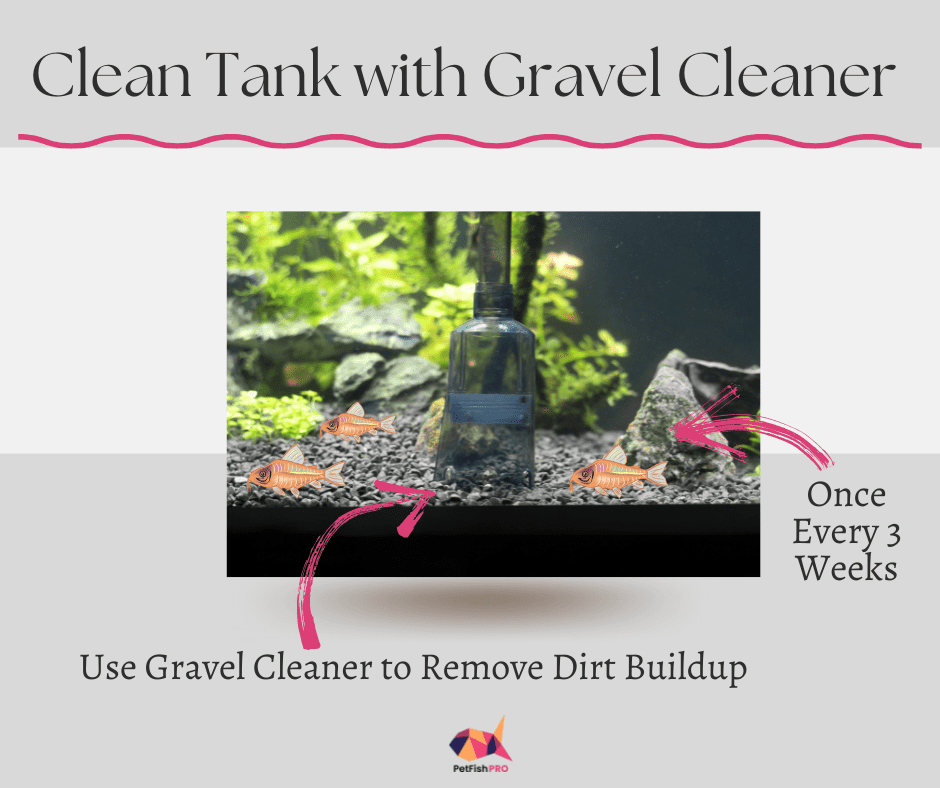
Check out our Corydoras Care Guides
See below for links to our extensive Corydoras Care guide.
Pet Fish Pro participates in affiliate programs including Amazon Associates Program and may earn commission from qualifying purchases at no extra cost to you. We write these articles for free, so thank you for your support!

